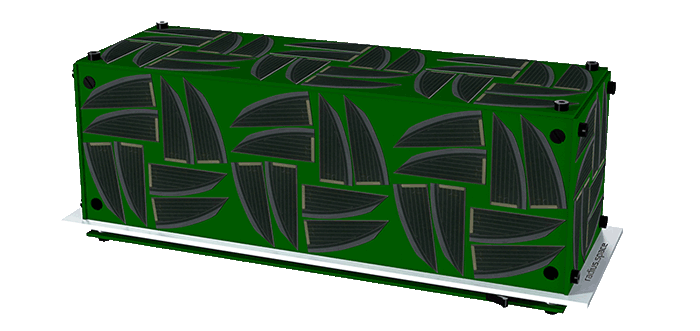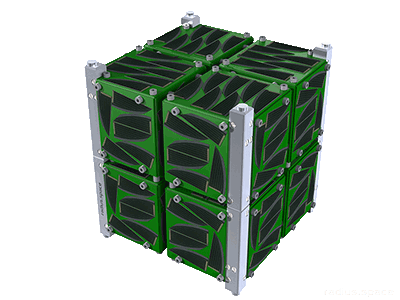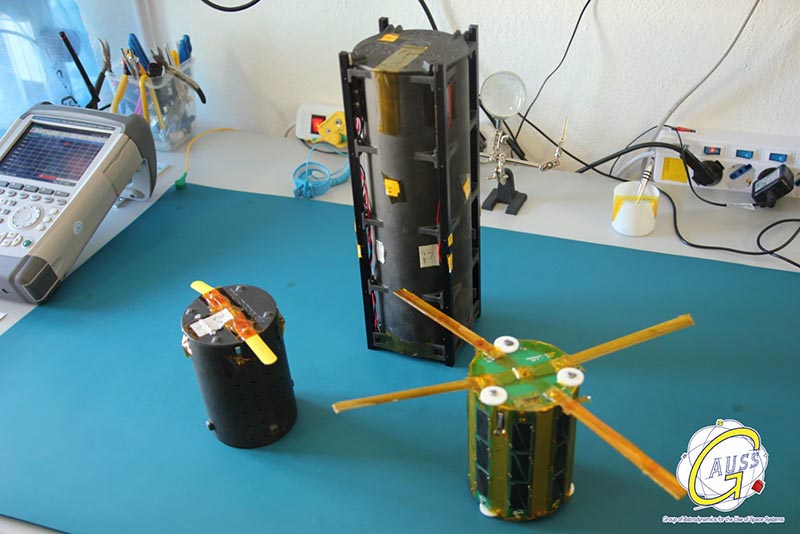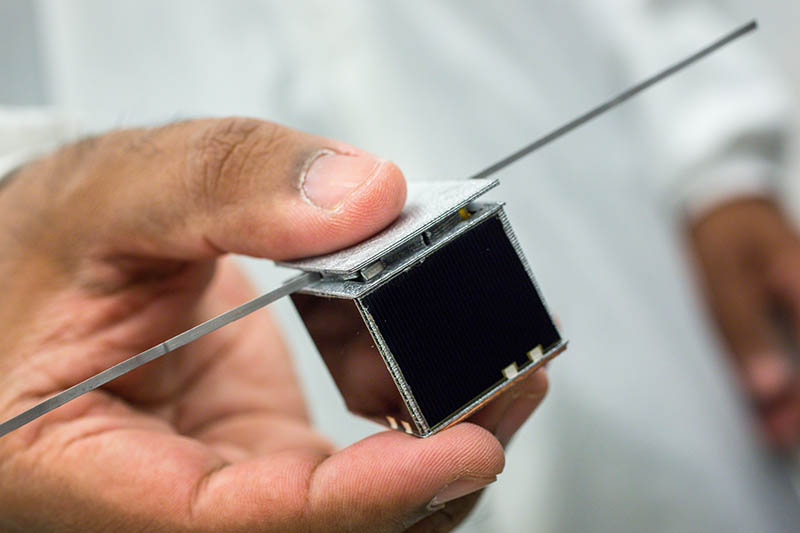What is a CubeSat?
CubeSats (cubesatellite, cube satellite) are a type of nanosatellites defined by the CubeSat Design Specification (CSD), unofficially called the CubeSat standard. Dimensions:
- 1U CubeSat is 10 cm × 10 cm × 11.35 cm.
- 2U CubeSat is 10 cm × 10 cm × 22.70 cm.
- 6U CubeSat is 20 cm × 10 cm × 34.05 cm.
- 12U CubeSat is 20 cm × 20 cm × 34.05 cm.
- Smallest existing CubeSat design is 0.25U and largest is 27U.
- Smallest launched CubeSat is 0.25U and largest is 12U as of 2019 January. Very soon 16U from US or 20U from China.
There are 2 different classes of deployers/dispensers:
1. First type is the classic 4 rails in the corners. It's recommended to be aware of the specfications of modern deployers, because dispensers from ISIS and NanoRacks allow larger deployables, wider solar panels and thinner rails compared to original P-POD. For example
- extruded height can be 9 mm instead of 6.5 mm and
- can be up to 2 kg per 1U which should not cause problems with launch providers.
2. Second type is tabs on Planetary Corp Systems (PSC) dispensers. The 13 CubeSats that will fly on SLS in 2018 will use them.
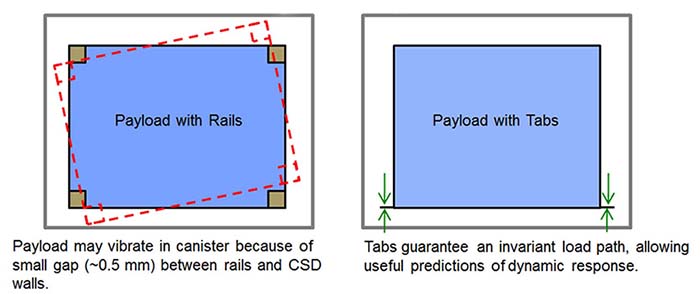
CubeSat sizes

Getting started with building CubeSats
First reading:
- CubeSat 101: Basic Concepts and Processes for First-Time CubeSat Developers is an excellent handbook by Cal Poly and NASA's CubeSat Launch Initiative!
- NASA State of the Art Report of Small Spacecraft Technology contains a wealth of valuable information on various technologies.
- CubeSat Design Specification (CSD) and environmental testing requirements.
Things to watch out for:
- On-board flight software and mission control software (MCS) are vital and often forgotten or ignored when putting together an Excel sheet of subsystem costs from online shops. Some level of customization for mission requirements is likely too depending on the mix of subsystems and payload. MCS is already required from the integration and testing phases. Companies like Kubos and Bright Ascension provide both flight-proven and well integrated solutions.
- Second set of hardware for parallel software development and operations rehersals after launch is highly recommended.
- Most modern deployers allow for larger extrusions, higher mass and smaller rails than the mechanical requirements from the CubeSat Design Specification (CSD). Deployments from P-POD are becoming rare.
- Launch Providers table includes some CubeSat launch costs. These are similar to the final prices. Free or cheaper launches are possible in some cases, but be careful with flight heritage and possible delays. CubeSat launch costs depend on units and not on the exact spacecraft mass. It is not recommended to estimate the dollar per kg price of rockets as that does not include deployers and many other relevant expenses.
Fun CubeSat quotes
It all started as a university education program satellite. It was kind of funny. I didn't think that people would criticize it as much as they did, but we got a lot of feedback, you know, "That's the dumbest idea I've ever heard. Nobody's going to use this toy." We said, "Who the heck cares. We'll go ahead and use it. We're using it for education."
A chat with Bob Twiggs by Stephen Clark, 2014, spaceflightnow.com
Another thing that was kind of funny is we had no interest from NASA or any of the military organizations. It just wasn't anything they were interested in, so it was all funded without any funding from those aerospace organizations. I'm kind of glad that NASA didn't help us, or we'd probably never got it done.
It was developed for the education of students. If you make it small, they can't put much in it, so they get it done quicker, and hopefully you can get it launched for a lot less money. I don't think Jordi Puig-Suari at Cal Poly or myself had any idea that we'd see days like this. A chat with Bob Twiggs by Stephen Clark, 2014, spaceflightnow.com
Early launch providers were Russian. We did go to some of the American launch providers, Lockheed Martin comes to mind, and they said, "If you give us a half-million dollars, we'll study it, and then if it makes economic sense for us to launch it, we'll do it." We kept asking them to take some of the lead (ballast) off and fly some of these things as secondaries, but they just didn't go along with it. I was really disappointed that the aerospace industry couldn't see the benefit other than profits from it. They couldn't see the educational benefit from it, and the potential of the educational benefit turning into commercial applications. Now, you see the commercial applications coming along with Skybox Imaging, with Planet Labs. Oh my goodness, they look like they have a tremendous economic potential. A chat with Bob Twiggs by Stephen Clark, 2014, spaceflightnow.com
